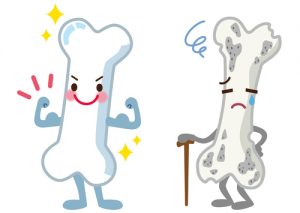A new study out by the University of Utah is discussing the ties between bone fragility and bone breakage. This study is different than most though, it’s not done by doctors, but instead an engineer. Claire Acevedo, mechanical engineering assistant, is leading the study and believes that maybe falls are not the cause of broken bones. There’s a new way to look at our bones now.

A New Way to Look at Our Bones
Acevedo believes that older people’s bones are more likely to fracture from repeated stresses. These activities can be as simple as walking, and that the accumulation is what makes the bones break so easily. This is called microdamage and it affects the quality of bone.
This goes against the common idea that an elderly person’s bones break from one hard impact, like a fall. This may mean that instead of the bone breaking because of the fall, that the weak bones are the reason for the fall in the first place.
Acevedo is calling this theory “cyclic loading” (repeated and fluctuating loads) and it might be similar to the study of structures and engineered materials. This same type of stress in machines caused tragic accidents in the early 20th century and lead to the development of “fracture mechanics.”
Acevedo says that stress fatigue is the most common type of failure in machines and can be deadly. It can cause collapses of metal bridges, failure of ships, and even the cracking of aircraft airframes and engines.
This means that bone quality could be more important than previously thought. It’s not just the mineral density, but how well collagen can provide stretchability to the bone under stress and to resist fractures.
“Bone quality is much more important than what we have been thinking,” Acevedo says. “Old bones gradually lose their mechanical properties, their ability to self-repair and to recover bone quality to prevent the formation of a fracture.”
Read more here.

